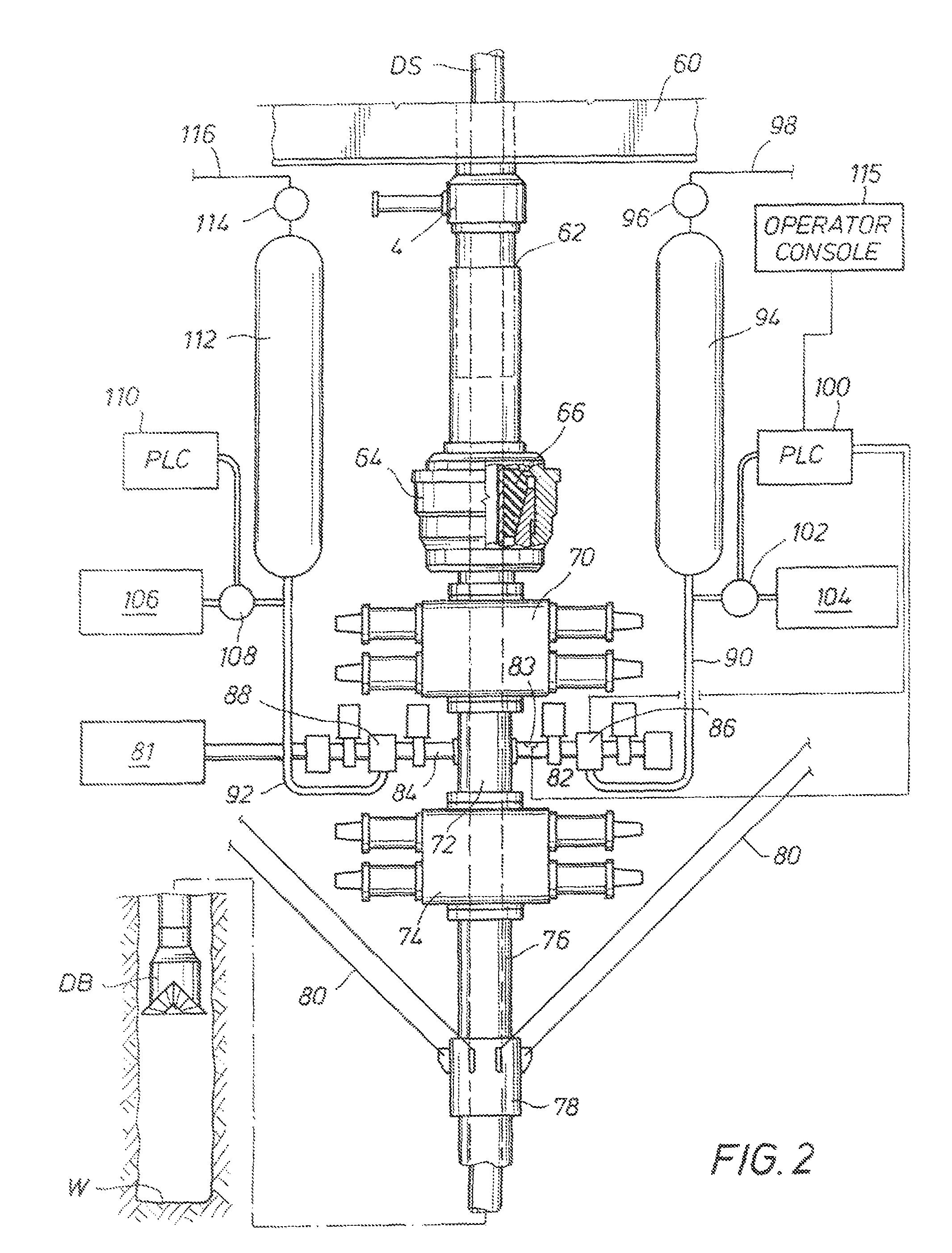System and method for managing heave pressure from a floating rig
a floating rig and pressure management technology, applied in special purpose vessels, sealing/packing, borehole/well accessories, etc., can solve the problems of wellbore pressure fluctuation, loss of circulation or an influx of formation fluid, and depletion of reservoirs and deepwater prospects
- Summary
- Abstract
- Description
- Claims
- Application Information
AI Technical Summary
Benefits of technology
Problems solved by technology
Method used
Image
Examples
Embodiment Construction
[0049]The below systems and methods may be used in many different drilling environments with many different types of floating drilling rigs, including floating semi-submersible rigs, submersible rigs, drill ships, and barge rigs. The below systems and methods may be used with MPD, such as with CBHP to maintain a substantially constant BHP, during tripping including drill string connections and disconnections. The below systems and methods may also be used with other variations of MPD practiced from floating rigs, such as dual gradient drilling and pressurized mud cap. The below systems and methods may be used with conventional drilling, such as when the annular BOP is closed to circulate out a kick or riser gas, and also during the time mud density changes are being made to get the well under control, while the floating rig experiences heaving motion. The more compressible the drilling fluid, the more benefit that will be obtained from the below systems and methods when underbalance...
PUM
 Login to View More
Login to View More Abstract
Description
Claims
Application Information
 Login to View More
Login to View More - R&D
- Intellectual Property
- Life Sciences
- Materials
- Tech Scout
- Unparalleled Data Quality
- Higher Quality Content
- 60% Fewer Hallucinations
Browse by: Latest US Patents, China's latest patents, Technical Efficacy Thesaurus, Application Domain, Technology Topic, Popular Technical Reports.
© 2025 PatSnap. All rights reserved.Legal|Privacy policy|Modern Slavery Act Transparency Statement|Sitemap|About US| Contact US: help@patsnap.com



